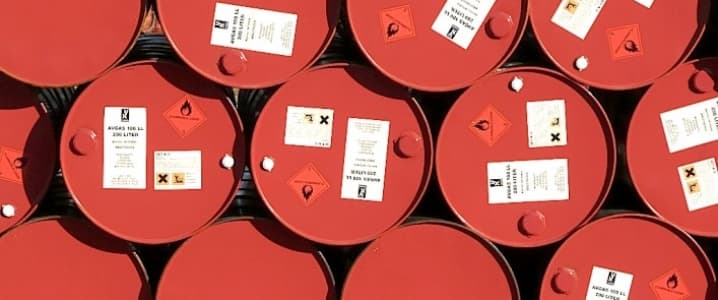Just a few of months ago, analysts and investment banks slashed their oil price forecasts as OPEC’s production cuts drew down the global oil oversupply slower than initially expected, and rising U.S. shale production capped any short-lived oil price gains.
But at the end of the summer, as OPEC and the International Energy Agency (IEA) started reporting stronger-than expected global oil demand growth and an accelerated pace of inventory declines, the market sentiment began to change. As 2018 and the November 30 OPEC meeting draw nigh, the cartel is said to be favoring a 9-month extension of the deal through the end of next year.
The possibility of such supply restriction throughout the whole of 2018—combined with expectations of strong oil demand growth and concerns over few new sources of supply due to years of underinvestment after the 2014 oil price crash—has prompted some analysts to warn that fear of the glut will turn into fear of a supply crunch next year. In addition, some investment banks expect the U.S. crude oil production in 2018 to underperform forecasts, which could remove some part of the cap on oil prices that American shale has kept since the start of this year.
Analysts at Jefferies see WTI at $55 per barrel by the end of 2018, and the Brent price is expected at $58.
However, Jefferies warned that U.S. production growth next year could be lower than expected.
“While the U.S. is out-punching on growth this year, [Jefferies'] bottoms-up forecast suggests that the U.S. could under-deliver on oil growth in 2018,” the investment bank said a report, as carried by Marketwatch.
“We believe that the backwardation in the Brent futures strip supports our thesis that the market is currently undersupplied, and if the OPEC/non-OPEC cuts are extended through the end of 2018 then we estimate the oil market will remain in modest under-supply until 2019,” according to Jefferies. Related: Saudi Rhetoric Sends Oil Prices To Two-Year High
Like many analysts and oil companies, Allianz Global Investors warns that the lower-for-longer oil prices have suppressed investment in exploration and new projects, which could result in a shortage of supply soon.
“An abundance of oil, thanks largely to U.S. shale, has pushed down oil prices and sector sentiment. But since that means less investment in new production sources, the bearish market may soon rebalance from fears of oversupply to concerns over shortages—which would push prices higher,” said Neil Dwane, global strategist at Allianz, in a note quoted by MarketWatch.
Bank of America Merrill Lynch also expects a supply shortage of 230,000 bpd this year. The bank also raised its WTI and Brent projections for the short term, seeing Brent prices averaging $54 in Q4 2017 and $52.50 in the first half of 2018, up from the previous estimates of $50 and $49.50, respectively. BofA Merrill Lynch also revised up its WTI price forecast to $49 this quarter, compared to the previous $47 estimate.
As of Friday, both WTI and Brent were trading at least $3 above that average forecast for Q4.
RBC Capital Markets also raised its oil prices forecasts for next year—albeit by just a dollar or two. WTI is now seen averaging $51 next year, up from the previous $50 a barrel forecast, while the Brent price view was raised to $55 from $53.19.
Regarding U.S. oil production growth, RBC Capital Markets differs from Allianz and Jefferies and is optimistic on American oil production at least until 2019. RBC Capital Markets lifted their forecast for the total U.S. crude production growth in Q4 2018 to 870,000 bpd from 850,000 bpd, and revised up the 2019 growth estimate to 810,000 bpd from 756,000 bpd.
In its latest Short-Term Energy Outlook, EIA expects total U.S. crude oil production to average 9.2 million bpd this year and 9.9 million bpd next year, which would mark the highest annual average production in U.S. history, beating the previous record of 9.6 million bpd set in 1970. Related: Why Millennials Can’t Bank On Clean Energy Jobs
Rising U.S. crude production and gains from other non-OPEC countries will likely act as “the ceiling for aspirations of higher oil prices” next year, the IEA said earlier this month.
According to Standard Chartered, shale activity has been declining as a reflection of rising costs, a drop in initial well productivity, increased breakevens outside the sweetest geological spots, and “cash-flow constraints at unsustainably low prices.”
“However, the turn down in drilling has yet to temper the optimism of most forecasts of U.S. output growth in 2018,” Standard Chartered said in a note quoted by Reuters.
While banks and analysts were quick to slash their oil price projections earlier this year, some of them are now very cautiously lifting their forecasts by slim margins. Still, voices are growing that a supply crunch may come sooner rather than later, and that U.S. shale resilience may have been overestimated.
By Tsvetana Paraskova for Oilprice.com
More Top Reads From Oilprice.com:
- Are Petrocurrencies Heading For Extinction?
- Here’s Where The OPEC Deal Gets Sticky
- Oil Prices Finally Break $60



















Claiming that OPEC cuts and Russian cuts will hold is nonsense since they are not holding at all. China imports are up but this is seasonal. On the bigger front China is working toward making the Yuan a reserve currency. Coal already trades in Yuan saving Australians 12% per transaction over the US Dollar Reserve. When Oil flips to the Yuan, expect a very fast 10% drop in oil prices. Futures will be back to the spot market overnight.